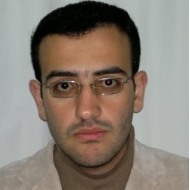International Journal of Intelligent Systems and Applications (IJISA)
IJISA Vol. 4, No. 2, 8 Mar. 2012
Cover page and Table of Contents: PDF (size: 689KB)
Finding Within Cluster Dense Regions Using Distance Based Technique
Full Text (PDF, 689KB), PP.42-48
Views: 0 Downloads: 0
Author(s)
Index Terms
Data clustering, density-based, DBSCAN, glory point, different density
Abstract
One of the main categories in Data Clustering is density based clustering. Density based clustering techniques like DBSCAN are attractive because they can find arbitrary shaped clusters along with noisy outlier. The main weakness of the traditional density based algorithms like DBSCAN is clustering the different density level data sets. DBSCAN calculations done according to given parameters applied to all points in a data set, while densities of the data set clusters may be totally different. The proposed algorithm overcomes this weakness of the traditional density based algorithms. The algorithm starts with partitioning the data within a cluster to units based on a user parameter and compute the density for each unit separately. Consequently, the algorithm compares the results and merges neighboring units with closer approximate density values to become a new cluster. The experimental results of the simulation show that the proposed algorithm gives good results in finding clusters for different density cluster data set.
Cite This Paper
Wesam Ashour, Motaz Murtaja, "Finding Within Cluster Dense Regions Using Distance Based Technique", International Journal of Intelligent Systems and Applications(IJISA), vol.4, no.2, pp.42-48, 2012. DOI:10.5815/ijisa.2012.02.05
Reference
[1]J. Han and M. Kamber, Data Mining: Concepts and Techniques (2nd Edition), Morgan Kaufmann Publishers, 2006,
[2]G. Gan, C. Ma, and J. Wu, Data Clustering: Theory, Algorithms, and Applications, ASA-SIAM Series on Statistics and Applied Probability, SIAM, Philadelphia, ASA, Alexandria, VA, 2007.
[3]W. Zhenxing, Z. Liancheng, W. Qian, Clustering Algorithm Based on Characteristics of Density Distribution, Zheng Hua, IEEE 2010
[4]RUI XU and DONALD C. WUNSCH; "clustering" , JOHN WILEY & SONS, INC ,IEEE Press ,2009
[5]M. Ester, H. P. Kriegel, J. Sander, and X. Xu. A density-based algorithm for discovering clusters in large spatial databases with noise. In Proceedings of International Conference on Knowledge Discovery and Data Mining (KDD' 96), 1996.
[6]M. Ankerst, M. Bruenig, H.-P. Kreigel, and J. Sander. OPTICS:ordering points to identify the clustering structure. In Proceedings of ACM SIGMOD International Conference on Management of Data, June 1999
[7]A. Hinneburg and D. A. Keim, “An efficient approach to clustering in large multimedia databases with noise,” Proc. Fourth International Conference on Knowledge Discovery and Data Mining,1998
[8]Peng Liu, Dong Zhou, Naijun Wu, “Varied Density Based Spatial Clustering of Applications with Noise”, 2007, IEEE.
[9]E. Mollah , A. Rahman , R. Chowdhury; An Efficient Method for subjectively choosing parameter ‘k’ automatically in VDBSCAN , IEEE 2010
[10]M. Dash, H. Liu, X. Xu. “1+1>2 “: Merging Distance and Density Based Clustering
[11]K. Jain and R. C. Dubes. Algorithm for Clustering Data, chapter Clustering Methods and Algorithms. Prentice-Hall Advanced Reference Series, 1988.
[12]H. Kriegel, P. Kroger, J. Sander,and A. Zimek, Density-based clustering, John Wiley & Sons, Inc. WIREs Data Mining Knowl Discov 2011
[13]R. Weber, H.-J Schek, and S. Blott. A quantitative analysis and performance study for similarity-search methods in high-dimensional spaces. In Proceedings of the Intl. Conf. on Very Large Databases, 1998
[14]A. Hinneburg, D. Keim. Optimal Grid – Clustering : Toward Breaking the Curse if Dimensionality in High-Dimensional Clustering, IEEE
[15]P. Viswanath and V. Suresh Babu. Rough-DBSCAN: A fast hybrid density based clustering method for large data sets, Published in Pattern Recognition Letters 30 (2009).
[16]Sugato Basu, Ian Davidson, Kiri L. Wagstaff “Constrained Clustering Advances in Algorithms, Theory, and Applications”
[17]L. Kaufman and P. Rousseuw. “Finding Groups in Data - An Introduction to Cluster Analysis”. Wiley Series in Probability and Mathematical Statistics, 1990

